Adam: Giselle (The Royal Ballet)
Introduction
Giselle can arguably be considered to the be first wholly quintessential Romantic ballet, being first staged in 1841. Its subject of love, rejection, jilting, and subsequent revenge and redemption from beyond the grave would have been great topic for all Romantic artists to get their teeth into, and one which more contemporary composers and choreographers will quite happily update, such as the recent Australian Dance Theatre's version, entitled 'G'.
The basic storyline is as follows.
Giselle is a simple peasant girl, who believes she is betrothed to a handsome peasant boy. He is, in fact, Count Albrecht, and is also supposed to be married to the Duke of Courland's daughter, Bathilde. Giselle's mother prefers that her daughter marry Hilarion, a forester, who is fortunately also in love with Giselle. Hilarion doesn't trust Albrecht at all and searches for proof of who he actually is, finds it, and reveals all to both Giselle and Albrecht.
Giselle doesn't believe a thing until Bathilde arrives and so Albrecht can't hide his identity any longer. Giselle, for want of a better term, freaks out, and kills herself.
Being a young woman who has died before marriage, she is now ripe for being taken under the wing of the 'Wilis', who are the spirits of all such young women, and who make a point of catching any man they may find during the hours of darkness and killing them, or in this genre, dancing them to death.
Albrecht is placing flowers on Giselle's grave (in unconsecrated ground of course), and is found by both Hilarion and the WIlis. Hailarion is unfortunately dacned right into the nearest lake, where he drowns. The spirit of Giselle however, prevents the full power of the Wilis and their queen from getting to herself and Albrecht, thereby preventing him from being killed as well. When daybreak arrives, she is also free of the Wilis' power, but Albrecht has to remain alone.
Audio
Superb DTS which brings out a finely balanced orchestral sound.
Video
Equally good NTSC anamorphic picture that displays the colours and lighting of the production to great effect. There are no problems at all with the darker scenes.
Extras
The DVD only contains the obligatory cast gallery and synopsis, and the accompaying booklet has a short, but fairly informative, essay from Marian Smith about the origins and ideas behind the storyline and creation of the ballet.
Conclusion
The nice thing about classical ballet works is that they have quite often evolved considerably since the orginal perforrmance, not only in the choreography but also in the music used. The story can stay the same, yet almost everything else can change through the years.
Here, however, we are presented with a very traditional version recorded in 2006, using Marius Petipa's choreography and Horowitz's realisation of Adam's original score, and it's a great watch from beginning to end.
The plot is quite basic, and so is obviously stretched out somewhat in Act I with some 'characteristic dances' (possibly an incorrect term, but one I like using). The whole thing therefore rests on how the dancers create their characters, and all are quite superb.
Alina Cojocaru is stunning as Giselle. She is a natural as the innocent young girl in love, moving into her 'mad scene' quite believeably, and then from beyond the grave, becomes a ghostly, ethereal figure with almost no expression on her face, yet a huge amount in her dance. I have absolutely no knowledge of the technicalities involved in ballet, but was hooked every time she moved.
Another favourite of mine, Marianela Nuñez, is Myrtha, Queen of the Wilis. Here, she is cold, calculating and indeed, a little bit scary, and absolutely perfect in the role.
The principal male dancers, Johan Kobborg (Albrecht) and Martin Harvey (Hilarion) are equally as impressive, with some great expressive dancing, creating two strong characters, with Kobborg even extracting some sympathy from the audience, despite being a complete bastard.
As a production, this is what you may term as 'conventional'. The Rhineland setting and general rustic feeling is tangible, and everything is all the more successful for that. The lighting (by Jennifer Tipton / Clare O'Donoghue) is very effective, most noticeably in Act II where we experience some incredibly natural moonlight and generally creepy night ambience.
The orchestra plays superbly under Boris Gruzin (fantastic viola solo - and it's not often I say something like that! - in the Grand pas de deux ), and make a good case for some otherwise uninspiring music overall.
Before posting this review, I watched the DVD three times, and each time enjoyed it more. Despite the dismal and inexcusable lack of extras (hence the dropped 'marks'), this comes highly recommended.
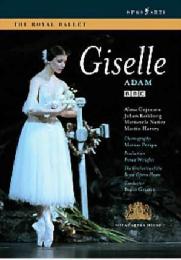
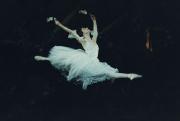
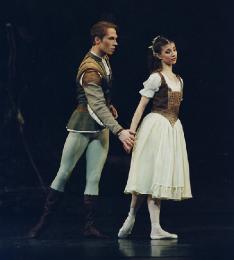
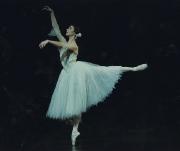
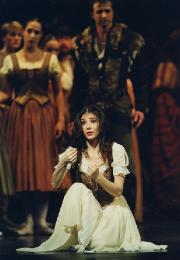
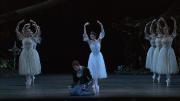
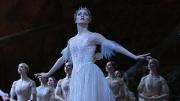
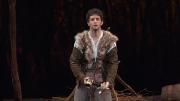

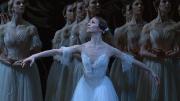
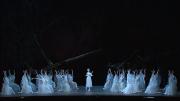



































Your Opinions and Comments
Be the first to post a comment!